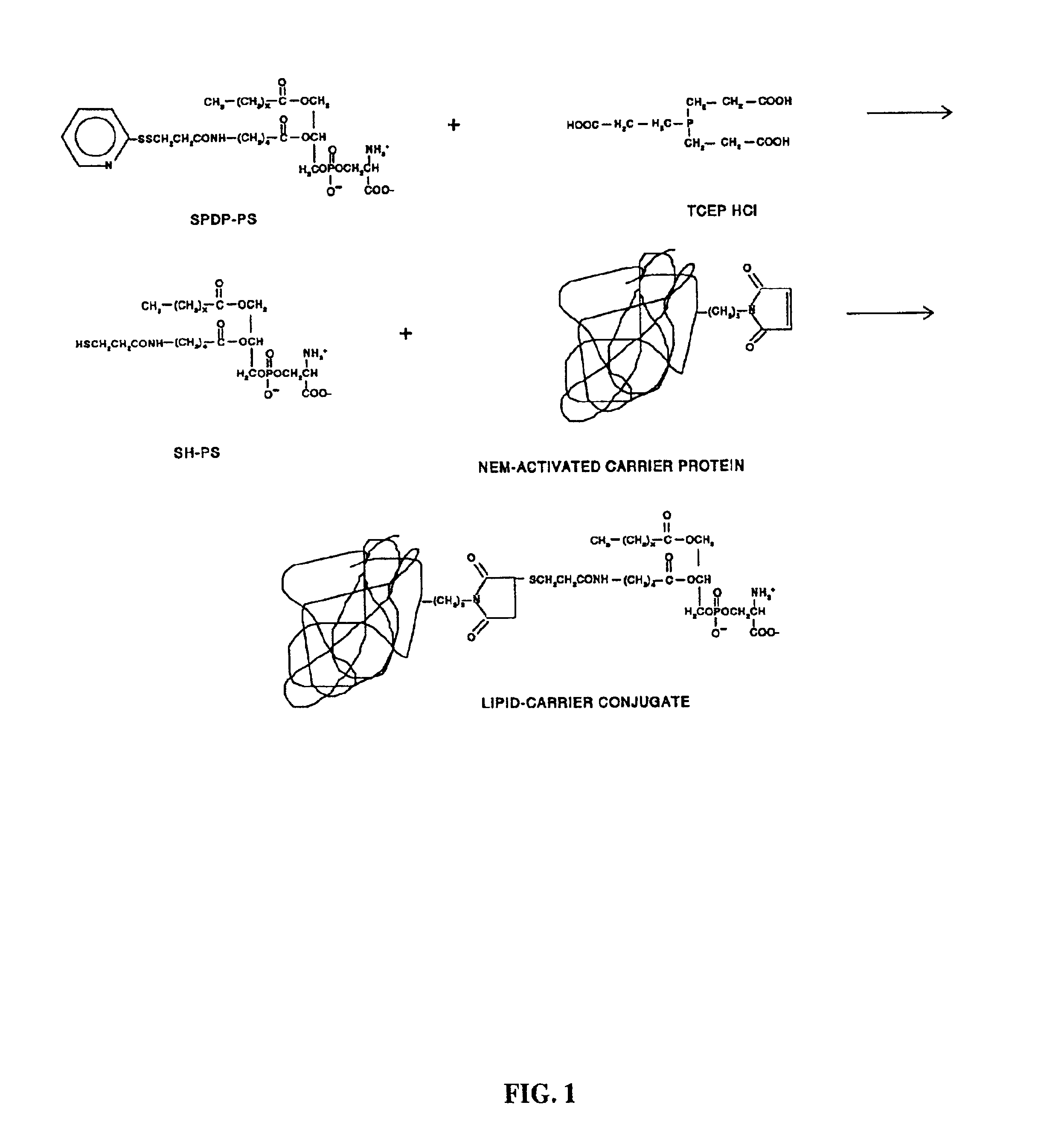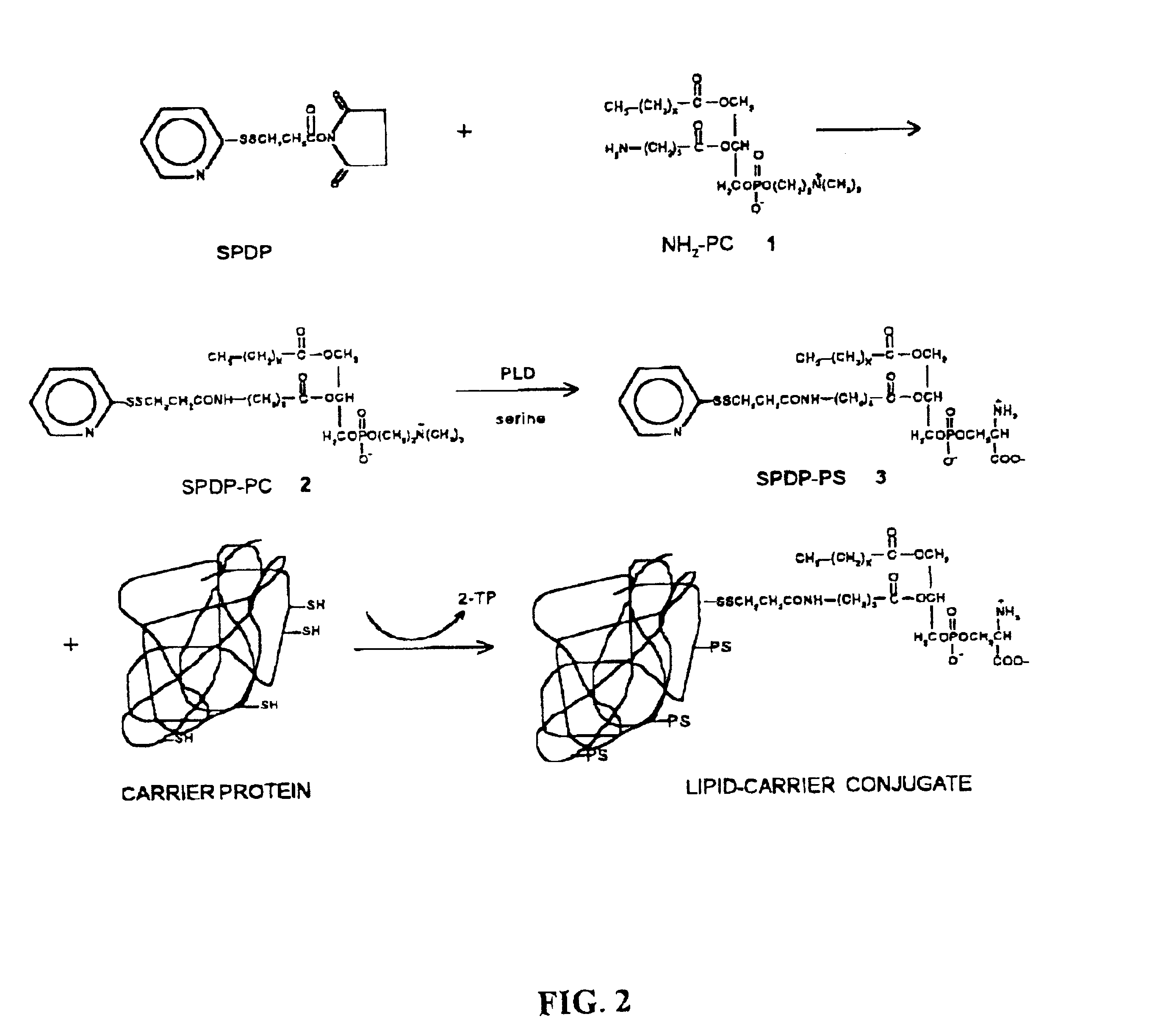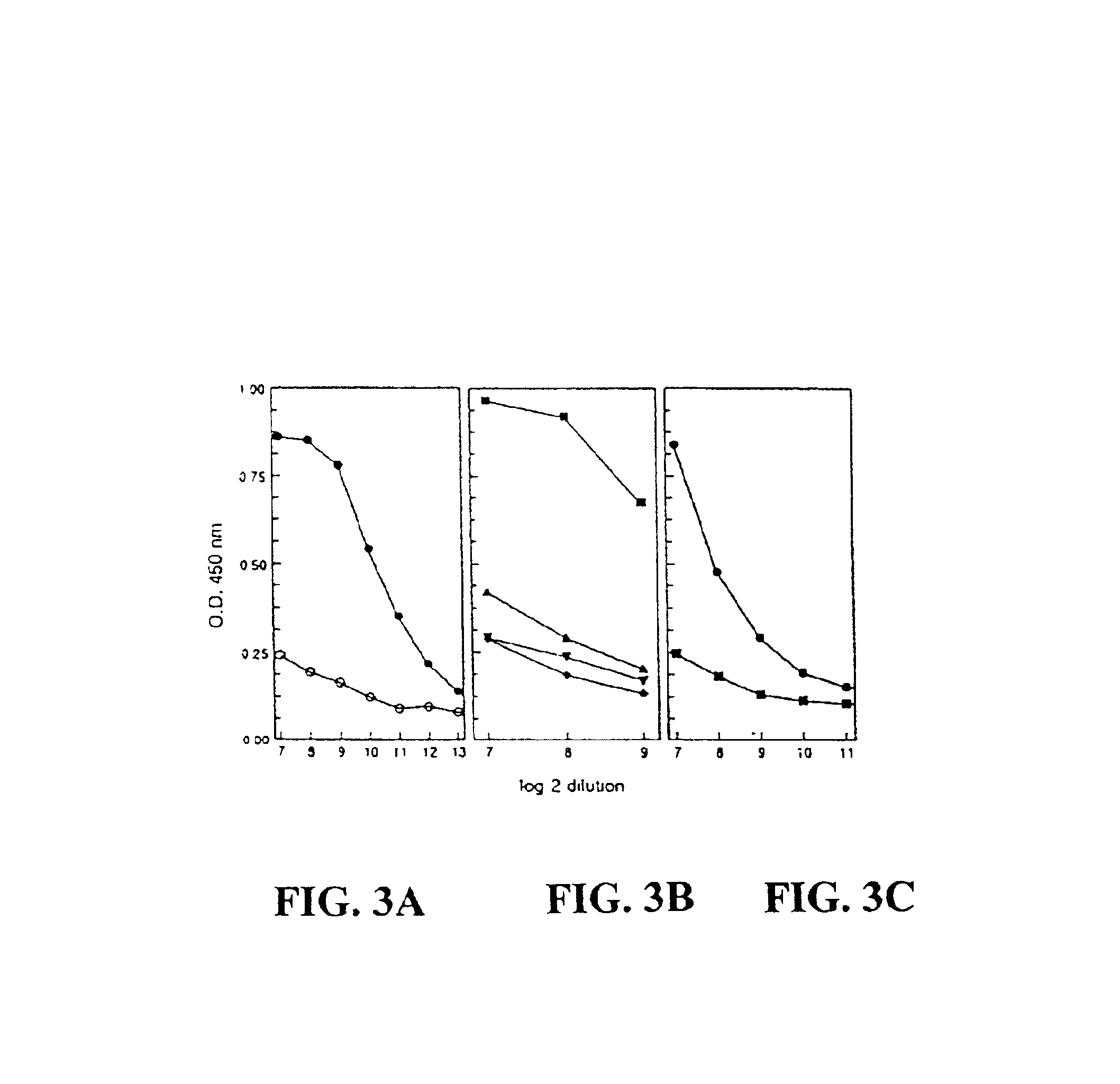Methods and compositions for inducing autoimmunity in the treatment of cancers
a cancer and autoimmunity technology, applied in the field of cancer, can solve the problems of ineffectiveness, slow progress of lipid antibody development, invasive and destructive methods, etc., and achieve the effects of high concentration, simple and rapid development, and sensitiveness
- Summary
- Abstract
- Description
- Claims
- Application Information
AI Technical Summary
Problems solved by technology
Method used
Image
Examples
example 1
5.1 Example 1
Production and Characterization of Polyclonal PS Antibodies
Because PS can be considered to be a non-immunogenic hapten, the inventor reasoned that an appropriate lipid-protein conjugate might elicit a potent and specific immune response. To address this issue and overcome the inherent problems of lipid immunogenicity and cross-reactivity, the inventor synthesized PS that contained a "sulfhydryl-activated" coupling group at the end of the 2-position side chain and covalently linked the lipid to a protein carrier (Diaz et al., 1998). The inventor shows that this antigen induced the production of PS-specific antibodies in primates, rabbits and mice and that these antibodies bound specifically to PS-expressing red blood cells (RBC). The inventor's results suggest that PS antibodies could be an important tool for the study of PS-dependent processes and its distribution in the membranes of living cells.
5.1.1 Materials and Methods
5.1.1.1 Materials
PS, dioleoylphosphatidic acid ...
example 2
5.2 Example 2
Induction of Autoimmunity for Prevention of Cancer
Cell membranes contain numerous phospholipid species all of which are structurally and organizationally tightly regulated over the lifespan of the cell. A large body of evidence indicates that phosphatidylserine (PS), unlike other phospholipid species, undergoes a dramatic redistribution in the cell's plasma membrane and becomes expressed in the cell's outer membrane leaflet upon acquisition of a pathologic phenotype. Phenotype-dependent redistribution of PS has been shown to occur during programmed death cell (apoptosis), platelet activation, cell aging and tumorigenesis. Because PS seems to be a ubiquitous marker of these pathologic cells, it may serve as a specific target epitope for aberrant cell populations and a therapeutic target for cancer treatment. To test the feasibility of this approach for the treatment of cancer, an autoimmune response against PS was raised in mice using the disclosed immunogens that preser...
example 3
5.3 Example 3
Induction of Autoimmunity for Immunotherapy of Cancer
BALB / c mice were given an intravenous injection of 20,000 RENCA cells on day 0 and therapy was started on day 3, comprising no further treatment (controls), or immunization with the 0.1 ml of PS-BSA preparation (1 mg / ml antigen in saline:Provax 2:1). 100 .mu.was given in two sites the first week, followed by two injections of 50 .mu.g in two sites 7 and 14 days later. The mice were monitored and lungs were harvested on day 31 and the number of individual tumor nodules enumerated (Table 4).
PUM
| Property | Measurement | Unit |
|---|---|---|
| temperatures | aaaaa | aaaaa |
| pH | aaaaa | aaaaa |
| pH | aaaaa | aaaaa |
Abstract
Description
Claims
Application Information
 Login to View More
Login to View More - R&D
- Intellectual Property
- Life Sciences
- Materials
- Tech Scout
- Unparalleled Data Quality
- Higher Quality Content
- 60% Fewer Hallucinations
Browse by: Latest US Patents, China's latest patents, Technical Efficacy Thesaurus, Application Domain, Technology Topic, Popular Technical Reports.
© 2025 PatSnap. All rights reserved.Legal|Privacy policy|Modern Slavery Act Transparency Statement|Sitemap|About US| Contact US: help@patsnap.com



